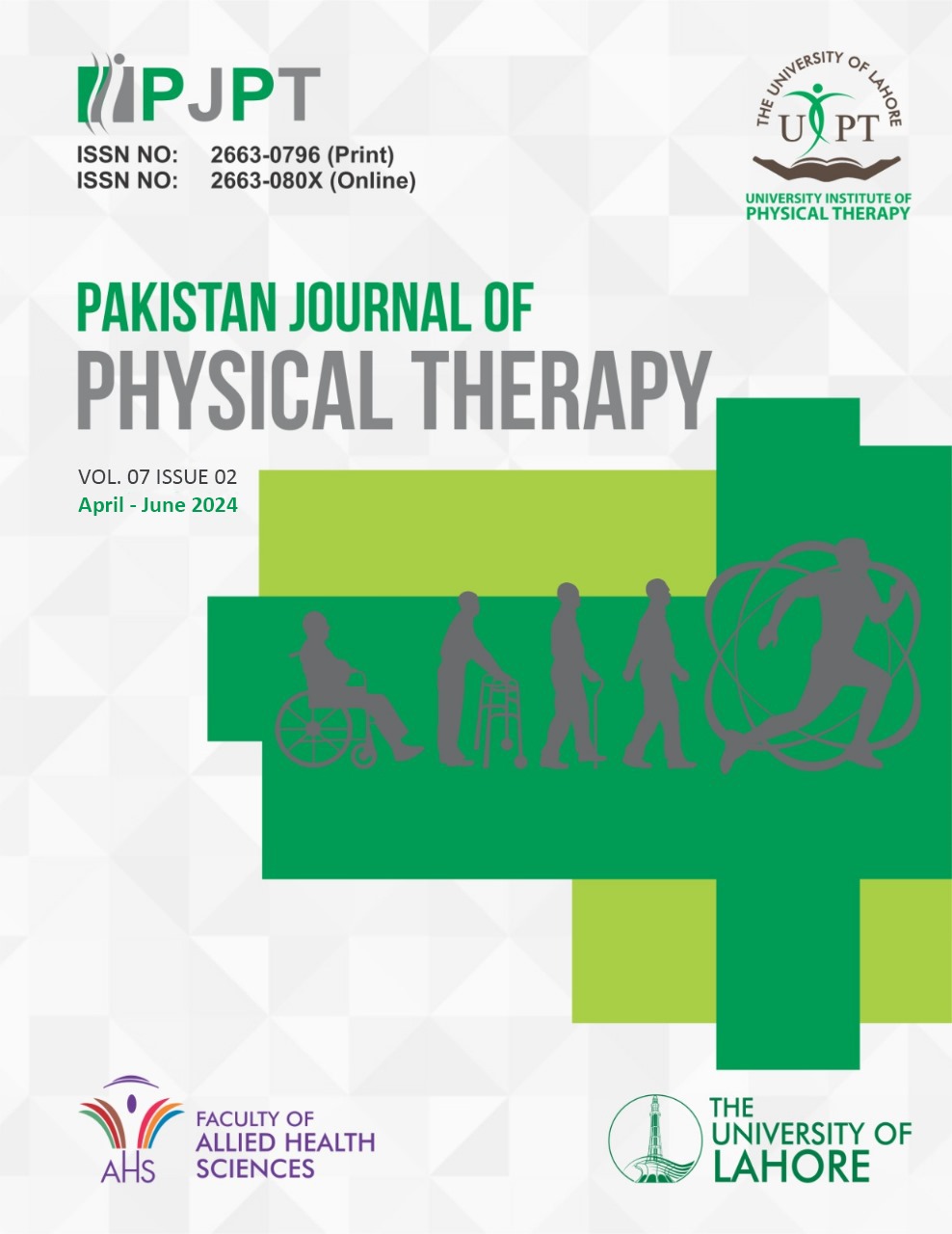COMPARATIVE EFFECTS OF MACQUARIE INJURY MANAGEMENT GROUP PROTOCOL IN ADDITION TO ROUTINE PHYSICAL THERAPY ON PAIN, RANGE OF MOTION AND FUNCTIONAL DISABILITY IN PATIENTS WITH KNEE OSTEOARTHRITIS
Abstract
The progressive and degenerative disease of the joint affects almost 250 million individuals all around the world. Knee osteoarthritis refers to a common condition characterised by inflammation of the joint, which imposes significant socioeconomic burdens. Objective: To determine the effects of the Macquarie Injury Management Group Protocol, in addition to Routine Physical Therapy, on Pain, Range of Motion and Functional Disability in Patients with Knee Osteoarthritis. Methods: A randomised comparative trial was conducted on a total of 84 participants, 49 females and 35 males. The data was collected from the OPD of the Physical Therapy Department of Avicenna Hospital, Lahore, for six months from 13 April to 14 October 2021. In the routine physical therapy, 25 females and 17 males were allocated, while in the other group, 24 females and 18 males were recruited. The Routine physical therapy group received TENS, stretching for gastrocnemius, hamstrings as well as quadriceps muscle and strengthening exercises for quadriceps range of motion exercises and patellar mobilisations, grade III and IV, 30 minutes/session lasting for 12 sessions on alternate days, three sessions/week. The other group received the Macquarie Injury Management Group Knee Protocol (soft tissue mobilisation) for 2 to 3 minutes, along with routine physical therapy exercises for 45 minutes/session lasting for 12 sessions on alternate days (3 sessions/week). The data was obtained using NPRS, Western Ontario and McMaster Universities Arthritis. (WOMAC) Scale for functional disability and goniometer for ROM. Results: The mean age of participants in the control group was 48.81+7.229, and in the experimental group was 53.24 +5. 355. The pre-session P-value of WOMAC is 0.195, while it is 1.33 in the post-treatment session. VAS mean value in the experimental group at the pre-treatment level is 8.38; at the post-treatment session, it is reduced to 1.95. ROM mean at the post-treatment session is increased to 65.78. Conclusion: Both groups are effective in the reduction of pain and disability and improvement in range of motion.
Keywords: Functional disability, knee osteoarthritis, Macquarie Injury Management Group Protocol, Routine physical therapy, ROM
Additional Files
Published
How to Cite
Issue
Section
License
Copyright (c) 2024 Pakistan Journal of Physical Therapy (PJPT)

This work is licensed under a Creative Commons Attribution 4.0 International License.



